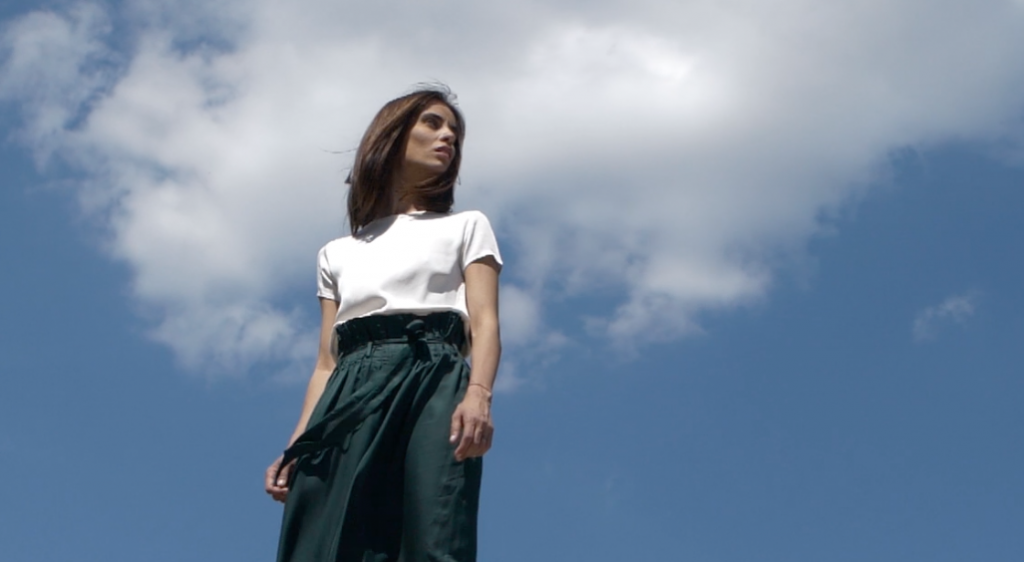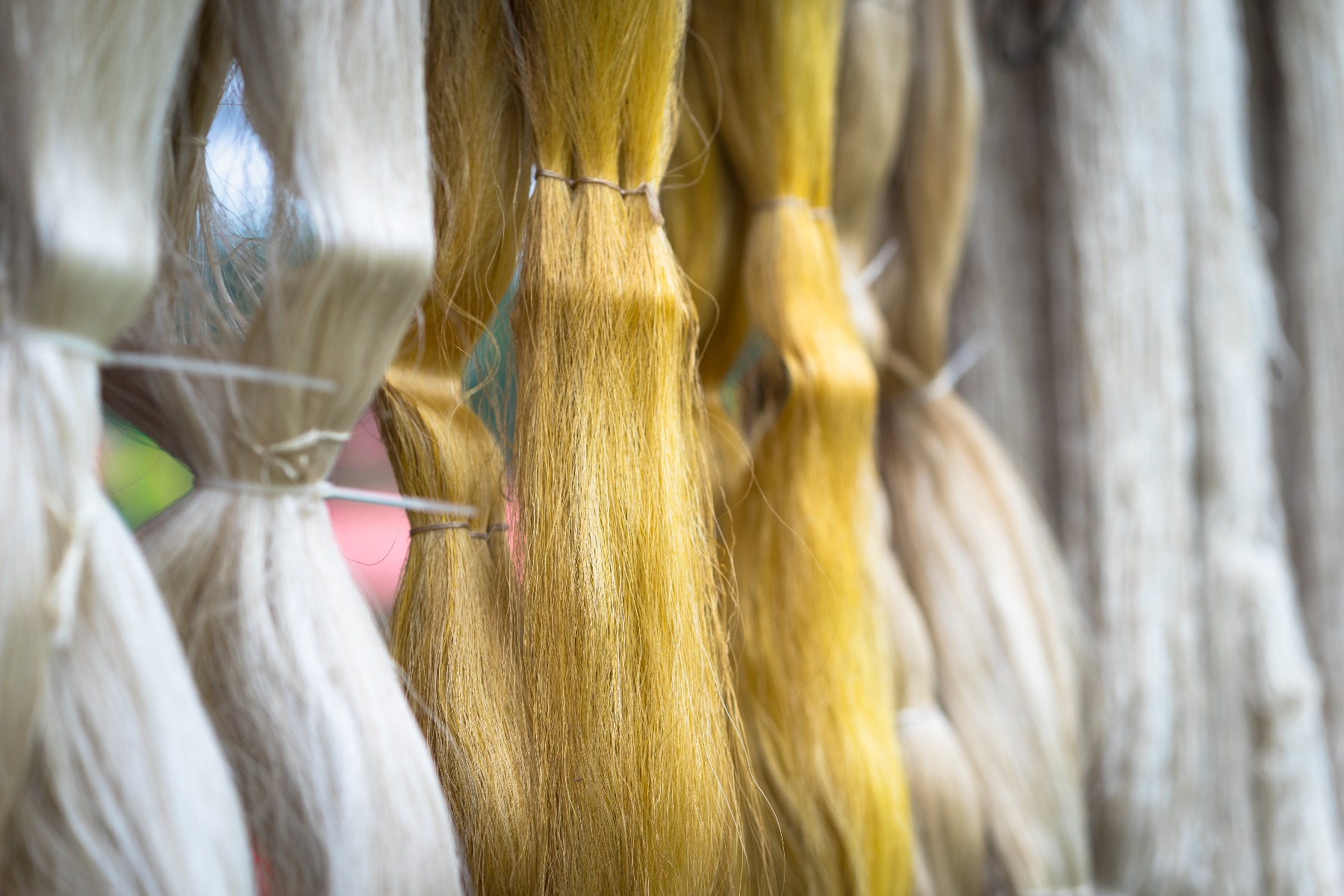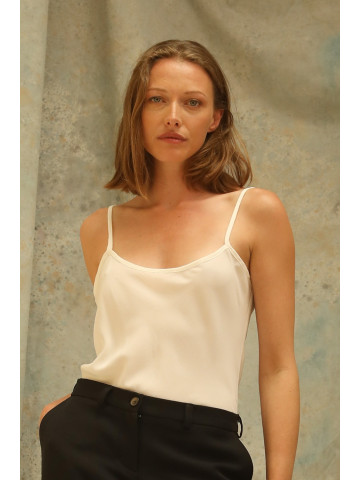TRUE SILK STORY
Is Silk the most sustainable fabric available?
For thousands of years silk is the most beautiful, naturally luxurious fabric on the planet, known for its elegance and luxury, and it is an outstanding natural protein combining strength and elasticity.
As beautiful and natural silk is, there has been a dilemma how humane is the conventional process of making it and it has left many people deeming it unethical. Innovative methods of making silk fabric has emerged. like the amazing technology of Bolt Threads . However, I think there is a lot of speculation and dubious information on the internet, about different types of silk textiles. It is fair to say that after thourough research, the majority of the information is misinterpreted for the purposes of marketing.
My approach to sustainability has always been based on information and research. That is why I believe that getting the facts straight is the first step towards improvement of the supply chain. I am are very passionate about silk and most of our products are made from the precious fibre, although silk has its own impact on the environment, it's proofed as one of the most sustainable textiles with minimal energy and water consumptions. Furthermore, my research shows that the impact of making silk is ethirely dependent on how it is manufactured, and best practices need to be implemented to ensure sustainability. Silk fibres account for very small percentage fo the global textile market, about 2%. You can find more facts and information on sericulture on the website of INSERCO (International Sericulture Commision)

Why Silk?
Born and raised Bulgarian I have been introduced to the process of silk making since young age. I'm originaly from Sofia, the capital city, where one of the largest factories for silk manufacturing was based, but the main part of the supply chains back then was based in the coutry side. Most of my friend's families were directly involved in the process, by gathering cocoons, taking care of the mulberry crops and providing the raw material which is to be turned into cloth.
Very little known fact is that Bulgaria was the the Number One manufacturer and exporter of silk in Europe for almost a century, until the late 90's to be precise. In fact, there is plenty of data suggesting silk production existed in Bulgaria from VII-XII AD, until the global production started declining. However, in the late XIX AD sericulture in Bulgaria grew immensely, and the country became 8th in the world and 1st in silk export in Europe.
In 1921 the first trade unions of silk manufacturers in the country were formed in a samll town called Gabrovo.
From the 1950s to 1990s, due to government encouragement, the Bulgarian prices of raw silk, fabrics and garments produced there were comparatively cheap and competitive in the world market, with an average annual production of 1200-2000 tons of fresh cocoons.
HOW IS SILK MADE?
Produced by silkworms, the silk fibre is excreted from its glands in a continuous filament in order to build a cocoon. When ready, the fibre is unwound from the cocoon, dried and weaved in a loom to make the silk fabric.The silkworm caterpillar requires special care in its creation, like control of humidity and temperature, which have a key role in its health and productivity. Most of the people I've met who were involved in silk production said they had to be extremely careful of wearing perfume or smelling like tobacco, because it could directly kill the worms or deteriorate their health, thus decrease the quality of the fibre.
In nature there are more than 4000 types of silk worms, the silk worm that has been cultivated and used in commercial silk making is called "Bombyx mori" and that is something you can read everywhere. What you can't read is that there are no wild silkworms or "Bombyx mori" moths that roam and feed in the wild. Across several thousand years of captive breeding, the "Bombyx mori" evolved into a blind moth that cannot fly and lives only a few days during, which it lays about several hundred eggs and then dies within four or five days. The Bombyx Mori has even lost the ability to eat because of undeveloped structures within their mouth, and therefore can not live without human interaction.
The journey from the silkworm hatchling to the beautiful shirt you are browsing on our store front, is starting from the silkworm which produces a fibroin protein compound, which than through a natural process becomes a superfine fibre with incredible shine and elasticity. The entire process is very similar to spinning manmade “natural” fibres such as viscose or Tencel, except that it is air for silk rather than an acid bath for viscose that causes the fibres to solidify. The silkworm will spin several hundred meters of silk fibre in 3 days to form its completely closed cocoon. The cocoon will be the silkworm’s home for sixteen days as it turns from a chubby caterpillar to a white furry moth. Next is dropping the cocoon in hot water in which it dissolves the sticky sericincoating the silk fibres and holding the shape of the cocoon. After that the cocoons are gently dried and brushed on the outside to find the end of the silk fibre that made the cocoon. The cocoon is carefully unraveled and wound around a spool. This is raw silk, just pure silk fibres without any chemicals or treatments added.
Why Peace silk is not exactly humane?
And not precisely what is being explained to be, in all fairness.
The concept of ''Peace Silk'' has been sold all too well because it serves a ''market niche'' that hasn't been exploited.
I've encountered quite a few opinions in that regard and I always find it really difficult to communicate reasonably, sometimes I've came across some comical discussions. I have been told that in the making of the Peace silk, which is also marketed as ''Ahimsa''' (''do not harm'' from sancrit ), worms are not the crippled creature we are describing it to be, they can ''hear and see'' and I wonder ''Did you speak to them?'' Or that this particular breed has been imported from ''Wonderland'' and they feed only from mulberry trees?!
Essentially the process of making ''Ahimsa silk'' is the an attempt to replicate the natural process within a commercial setting. You see, after emerging from the cocoon, moths mate and the females are laying hundreds of eggs( yes each one of them). But silk farms have a limited supply of food and resources, therefore they can’t feed all the hatchlings, so although the moths have emerged safely from their cocoons and will die naturally, most of their hatchings will die from starvation or dehydration within a few days of birth. In actual practice, most Eri cocoons are cut open and the pupa is tipped out.
But also the process of Wild Silk making is not far from the above described, although called to be wild or ''Tussah silk'' as you would find it on the internet, silk marketed as "wildcrafted," ("Wild" Tasar and Tussah silks are not wildcrafted), they are farmed.
Their reproduction is controlled, the caterpillars are taken to their food plants, and the cocoons are harvested once the worms are done spinning their cocoons.
And is that sustainable or ethical? There is not a straight answer, nor a scientifically verified process that could confirm, either sustainability or ethics. I find that it is very much depending on the conditions within the different facilities, but the key point here is that Peace or Wild silk are made within farms and their reproduction and harvesting is entirely dependant on humans.
THE IMPACT OF SILK PRODUCTION
The truth is that the impacts of mulberry silk is highly dependent on how it is produced, and best practices need to be implemented to ensure sustainability. There are more than 4000 species of silk moth in the world yet only few are exploited for commercial silk production.
Organic and sustainable certification organisations are working on standards for organic silk but they have not yet been finalised and adopted.
Silk, like other protein fibres is coming from animals like wool from sheep, and could easily be created according to organic guidelines as they finally begin to be clarified and approved. To a certain extent silk fibres are already being produced in an organic environment, especially those produced in rural environments. Not much different than wool manufacturing.
In the same way, the raising of domesticated silkworms and the life of wild silkworms is, by nature, sustainable. Silk fabric, when produced by weavers on handlooms has a near zero energy footprint and satisfies most of the guidelines in sustainable fibre production. Silk produced in large commercial settings must be evaluated on a company-by-company basis to determine their sustainability.
Up to this point in our journey down the modern Silk Road, our spool of raw silk threads could easily be produced to comply with emerging sustainable and organic standards for silk and be manufactured into silk eco-fashion and organic clothing
THE SOLUTION
I think one of the most important things to do is to make your consumers aware and educate them with constant flow of information and actual, scientific research.
Ipso facto – Latin for “By the facts itself"
We adopted this philosophy as our guiding principal for evaluating all fabrics and clothing. Knowledge and information are our only resources when every emotional fibres screams out! If you are concerned about sustainable and eco-friendly silk, then seek silks dyed using low-impact and reactive dyes or vegetable dyes without any finishes. Hand loomed silks are the most energy-neutral. Silk is also biodegradable and will decompose gracefully in landfills. Although, given its durability, silk is ideal for recycling. My personal passion is to make sustainability chic and my main weapon is silk.So me and my team will keep on posting and talking about sustainable practises in silk making.
We are working everyday to bring more awareness to the process of silk making.
'With time and patience the mulberry tree becomes silk''

But also Silk has been called the material of the future because it is used in medicine and has proven some surprising findings. You can read more about it here:
UPDATE: Since this article was published we have increased the usage fo silk fabric in LG offerings, which is now more than 60% of the range. We have as well initiated the EU Silk Revival framework and we will keep you posted on the most recent developments.


